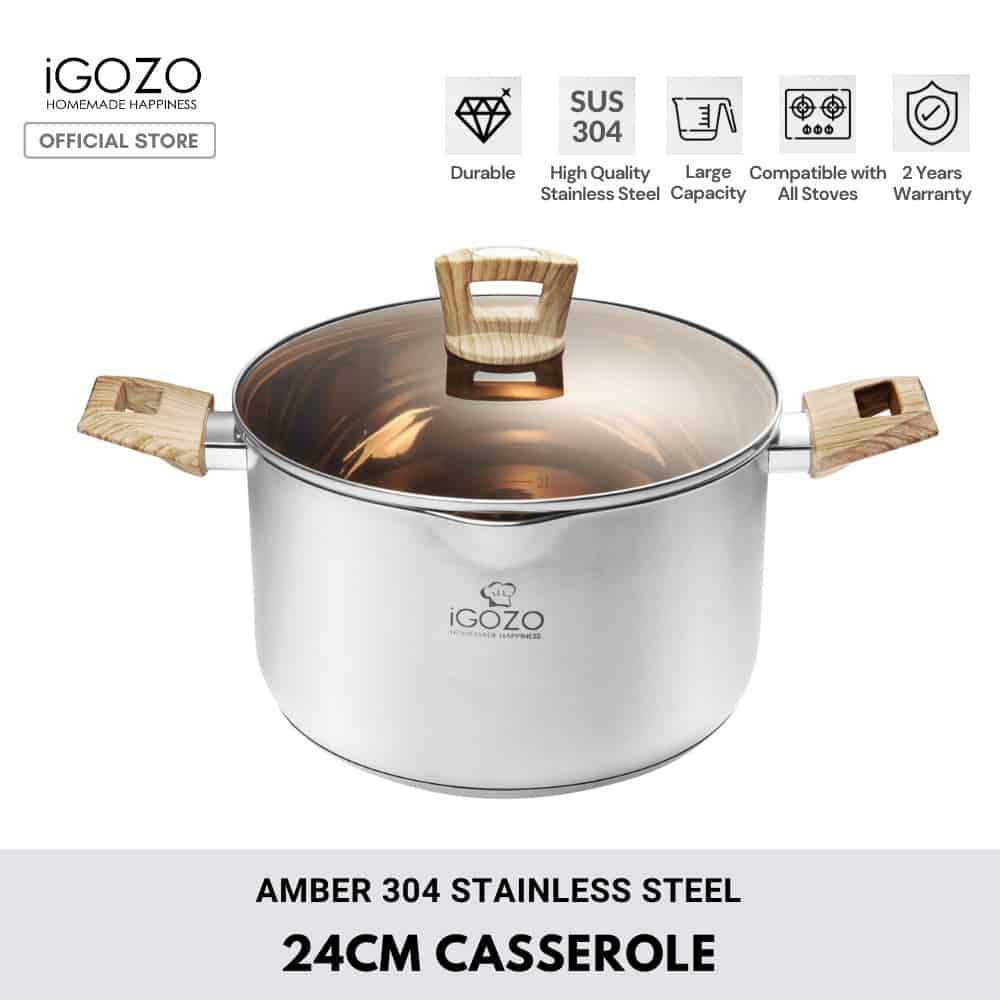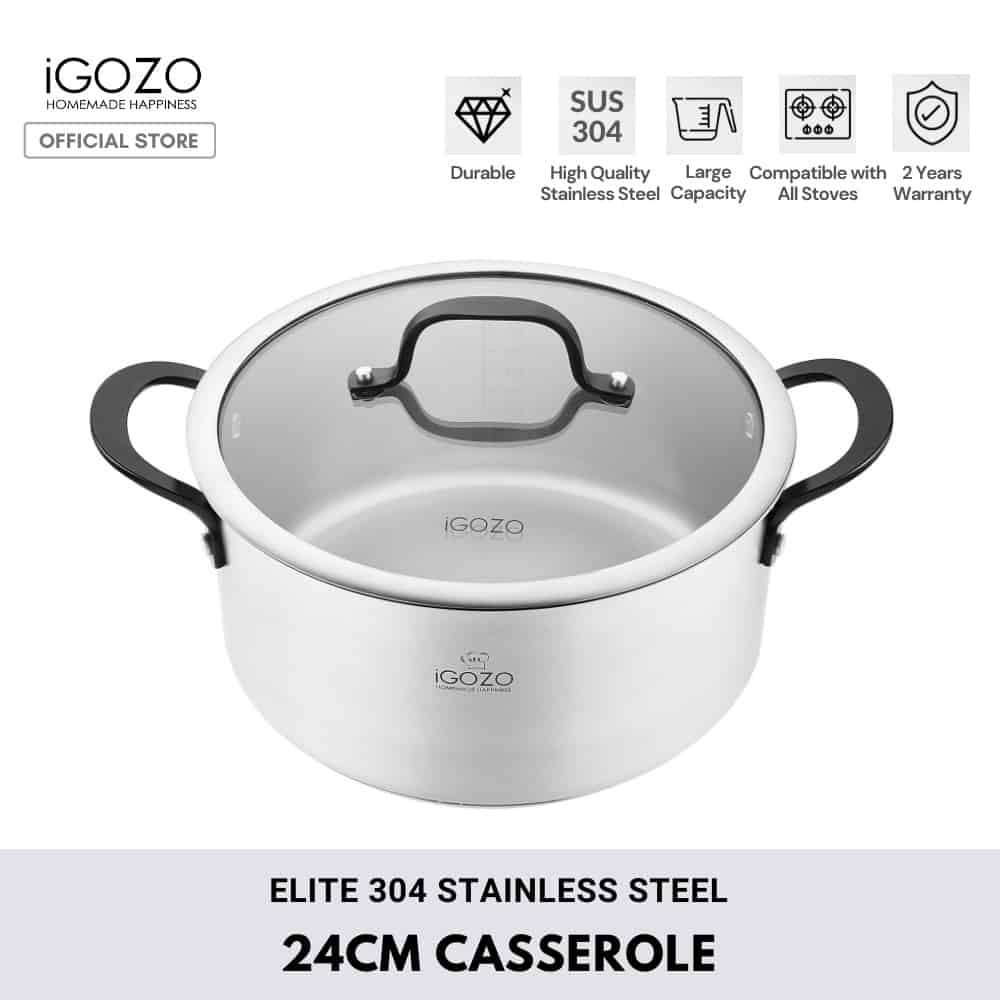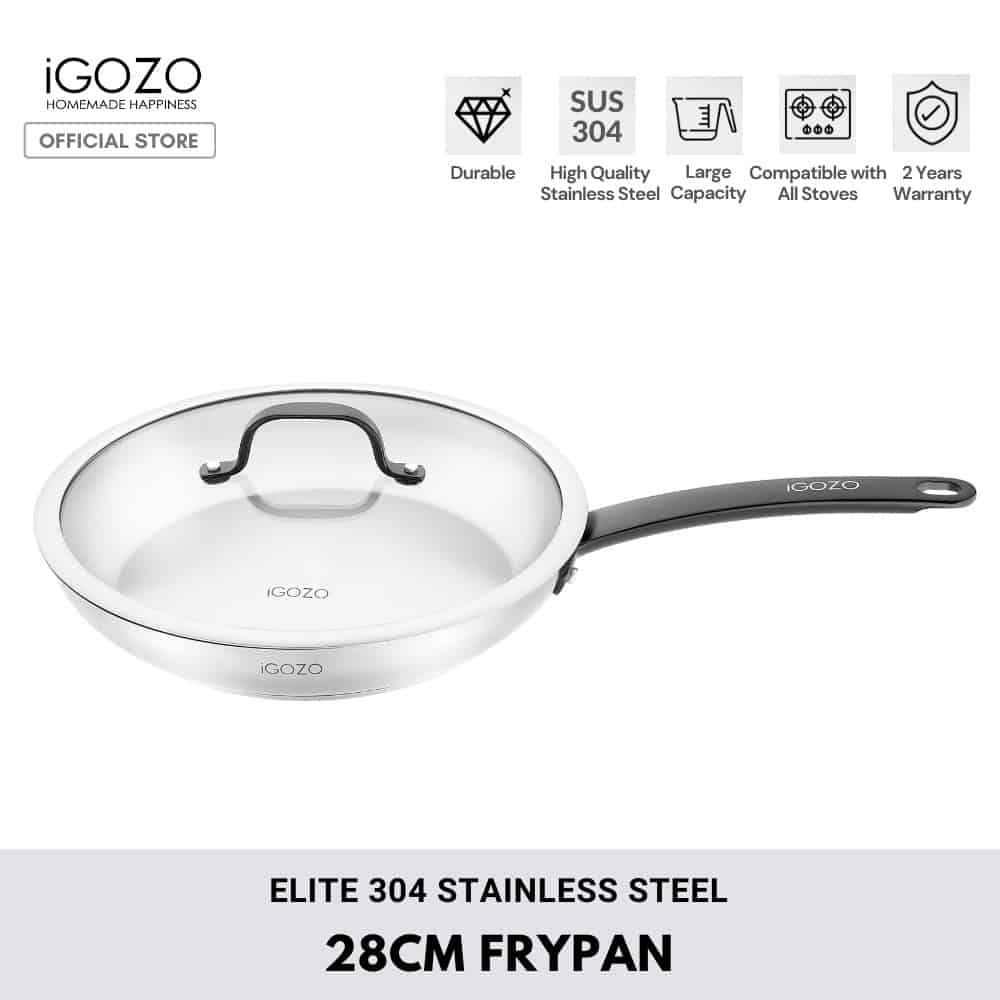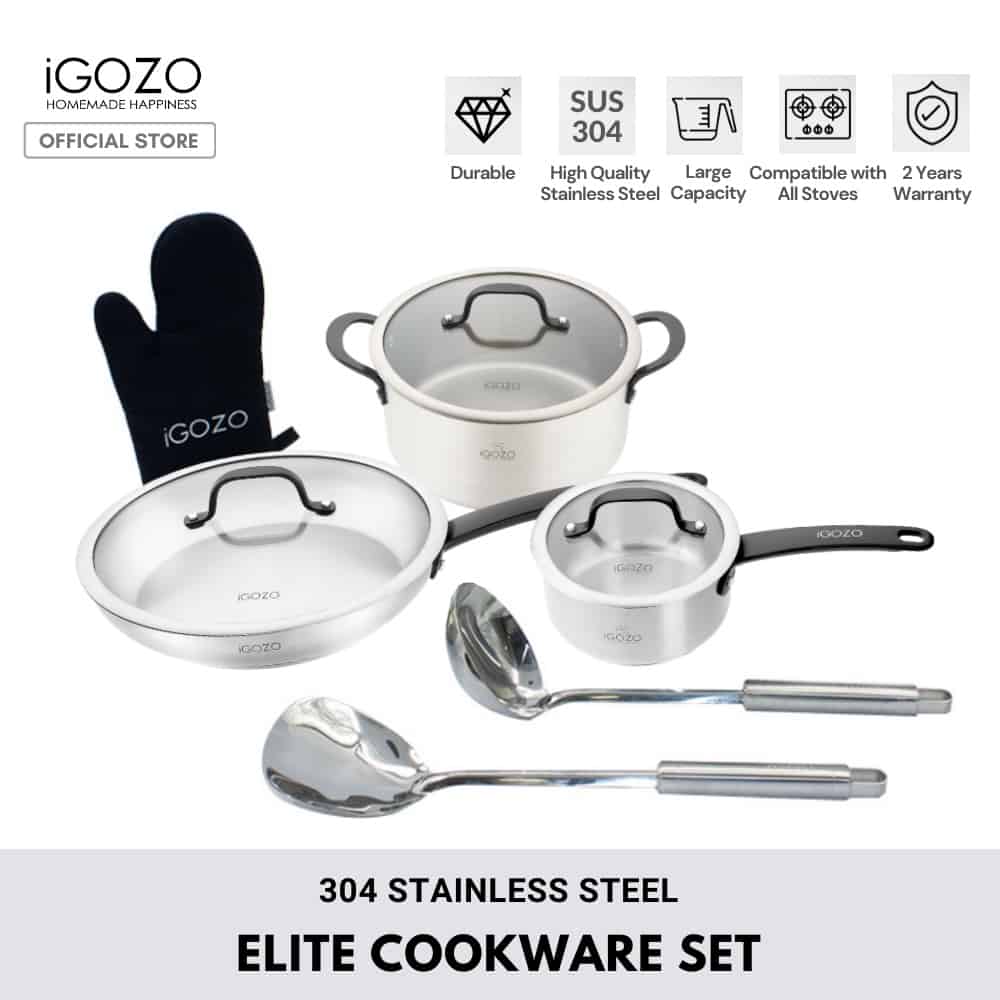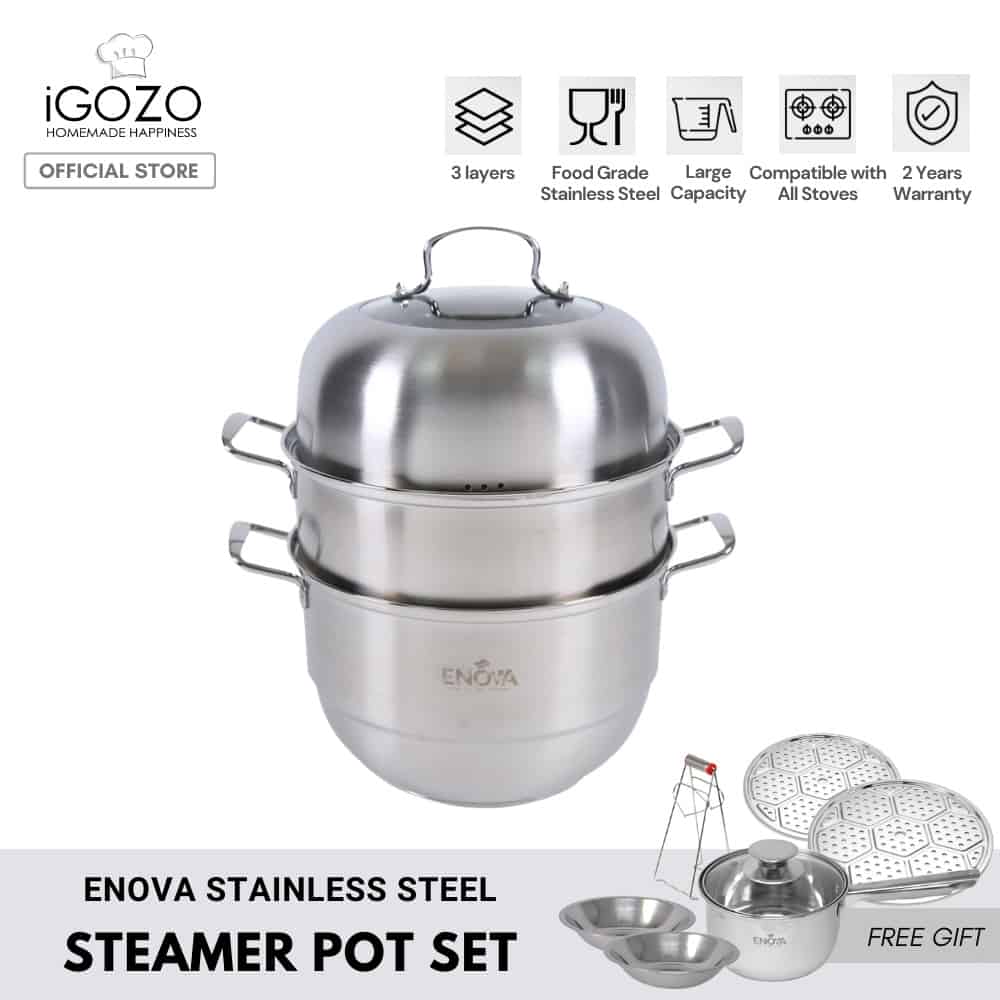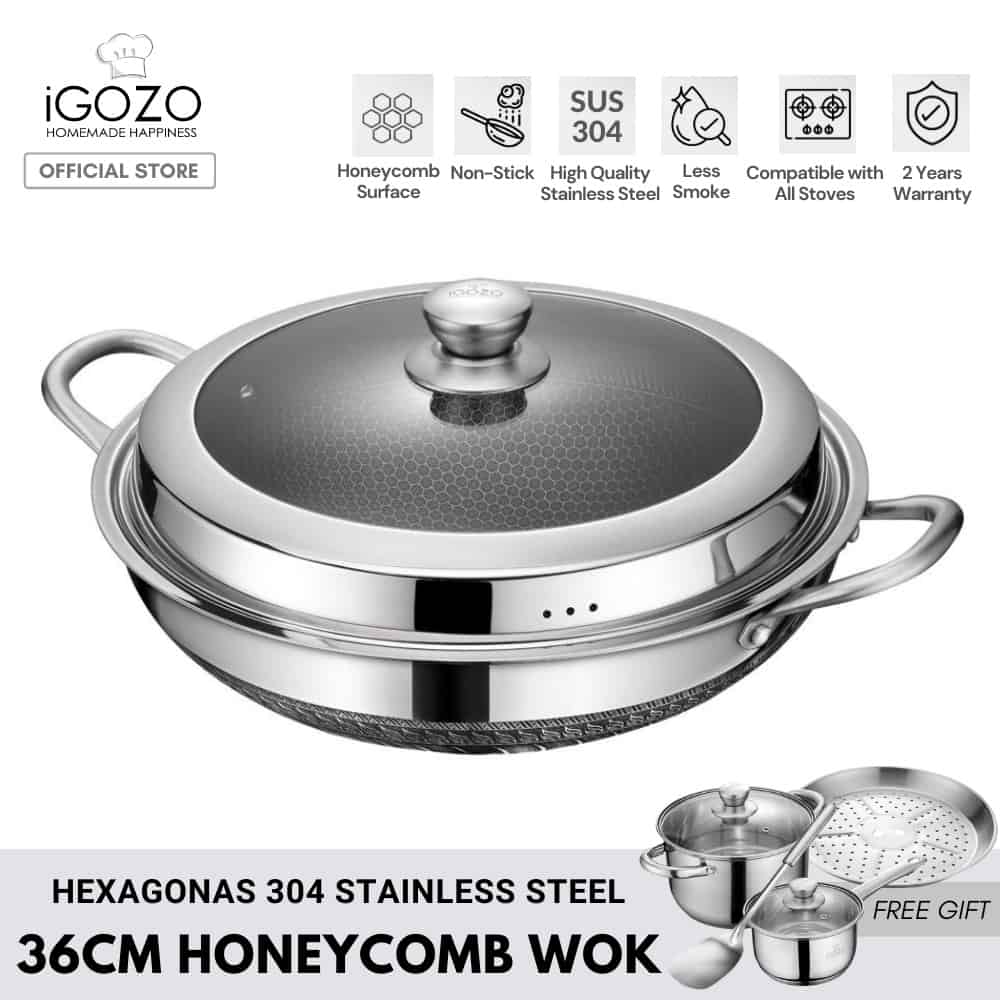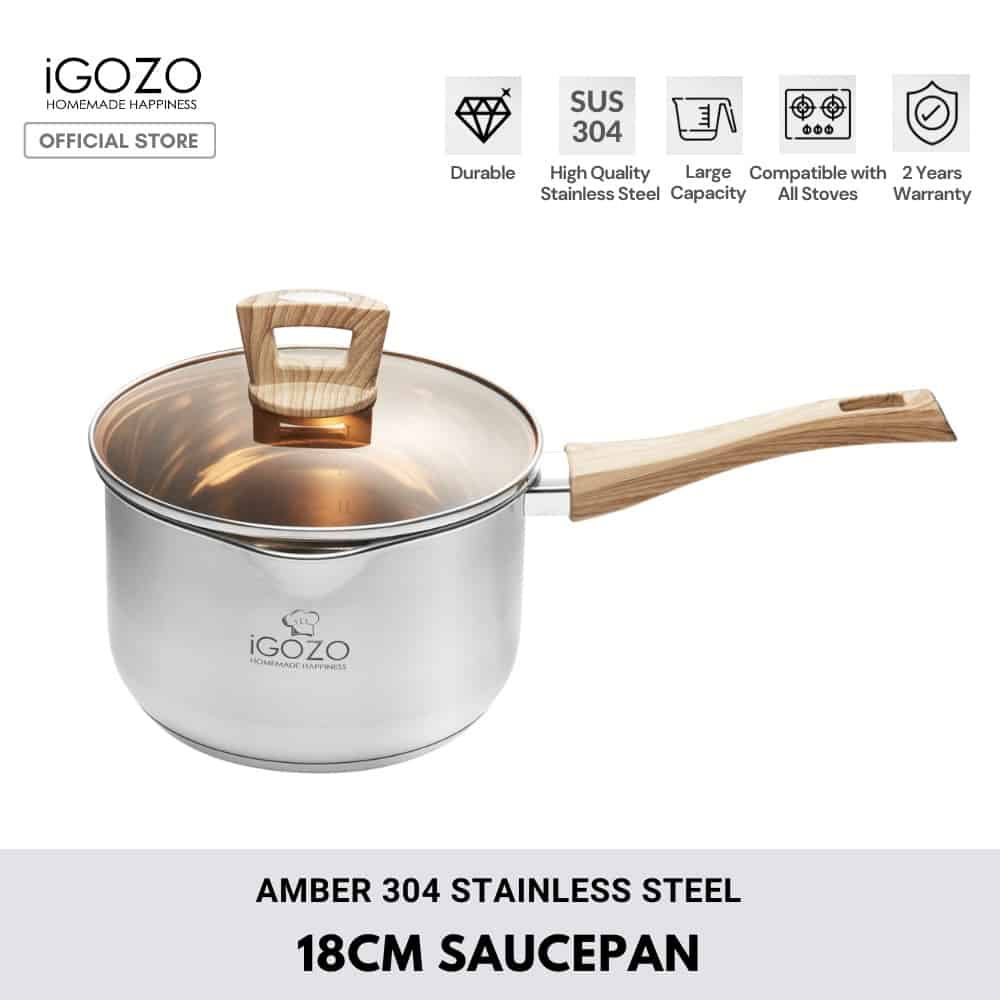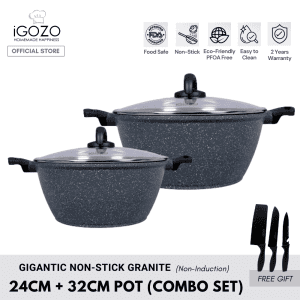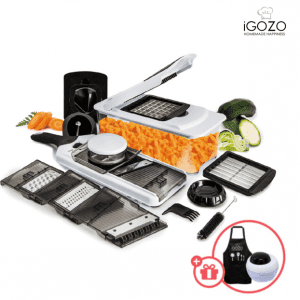- How to prevent food from sticking to stainless steel pans?
Here are some guides to it:
- Preheating the pan is key to achieving perfect results with stainless steel cookware.
- Place the pan on the burner. Turn the heat to LOW MEDIUM. Let it heat up for 2-4 minutes.
- To check if your pan is hot enough, run this quick test. After preheating but before oiling, put a small drop of water in the pan.
- When the pan is at the right temperature, the water will bead into little balls and roll around the pan.
- If the pan is too cold, the water will bubble and evaporate quickly. If you add the food at this point, it will stick. Wait a bit and try again.
- If the pan is too hot, the water will break apart into small droplets and ping around the pan. Turn the heat down and try again in a minute or so.
The correct amount of heat is crucial to perfect cooking with no burnt bits and no sticking.
- Season the Pan
Seasoning (or greasing) stainless steel pans with oil or an alternative fat is necessary to prevent sticking.
After you preheat the pan, wait a few minutes for the temperature to stabilize. When you add the fat, coat the pan thoroughly. You can do this by swirling the pan or use a pastry brush to spread the oil around evenly.
- Bring Food to Room Temperature Before Adding to the Pan
- Dry Food Before Adding It to the Pan
- Don’t Cook Too Much Food in the Pan at Once
- Don’t Move the Food Too Frequently while cooking
- Use a Non-Stick Pan for Problem Foods
- Sometimes, no matter what you do, certain foods will stick a little. Protein-rich foods, especially things like eggs and fish, are a bit tougher to work with while using a stainless steel pan. So switch to non-stick pan for these types of foods.
- Clean Appropriately
hand-washing is always preferred.
If you want to ensure maximum cooking performance, and extend your cookware’s lifespan, wash it with warm water, dish soap, and a soft cloth. Dry it thoroughly with a soft dish towel and stack it carefully, protecting the cooking surface from sharp objects and utensils.
- Preheating the pan is key to achieving perfect results with stainless steel cookware.
- How to remove burnt-on or stuck-on food in your stainless pan?
Boil and scrub
Set the pan on the stovetop, and add a couple of tablespoons of baking soda and a quarter-inch or so of water.
Boil until the water evaporates, and use a microfiber cloth to scrub off the residue left behind.
- How do I clean tough stains on stainless steel?
First, try the baking soda paste method.
If that doesn’t work, soak a clean microfiber cloth in a cup of steaming-hot vinegar, and lay it over the stain. Let it sit for 20 minutes, then wipe the stain away with the cloth.
Stainless Steel
In today’s world, stainless steel is still considered the best when it comes to long-lasting kitchen utensils and cookware.
Used in both professional kitchens and households across the world, stainless steel is a product well worth the investment.
A hardy form of steel that does not rust or stain over time.
Stainless steel, like every other kind of metal, is made from iron and carbon. But what sets stainless steel apart from the rest is its chromium and nickel alloying elements. These are the elements which create a corrosion-free product.

iGOZO AMBER 24CM 304 STAINLESS STEEL CASSEROLE
iGOZO ELITE 24CM 304 STAINLESS STEEL CASSEROLE
iGOZO ELITE 28CM 304 STAINLESS STEEL FRYPAN
iGOZO ELITE STAINLESS STEEL COOKWARE SET (FREE STAINLESS STEEL SPATULA + SOUP LADLE + KITCHEN GLOVE)
iGOZO ELITE 16CM 304 STAINLESS STEEL SAUCEPAN
ENOVA STAINLESS STEEL MULTIFUNCTIONAL STEAMER POT SET
iGOZO HEXAGONAS 36CM HONEYCOMB SUS304 WOK
iGOZO AMBER 18CM 304 STAINLESS STEEL SAUCEPAN
iGOZO PURE ANTI-BACTERIA STAINLESS STEEL FOOD CONTAINER
iGOZO HYBRID SUS304 STAINLESS STEEL 18CM SAUCEPAN + GLASS LID
iGOZO HYBRID SUS304 STAINLESS STEEL 24CM CASSEROLE + GLASS LID
iGOZO HYBRID SUS304 STAINLESS STEEL 32CM HONEYCOMB STIR-FRY WOK + GLASS LID
iGOZO HYBRID SUS304 STAINLESS STEEL 24CM HONEYCOMB FRYPAN + GLASS LID
STAINLESS STEEL FAQ
Helpie FAQ
Helpie FAQ
- What are the best natural stainless steel cleaning products?
- Vinegar
Vinegar is safe to use on stainless steel and helps remove oil and grime. - Dish soap
Mild, natural dish soap is non-abrasive and cuts through grease and grime with ease.
Squeeze a drop onto a damp microfiber cloth, scrub, rinse, and dry. - Baking soda
Baking soda is a powerful all-purpose cleaner. Its slight abrasiveness won’t harm your stainless steel, but it will help unstick stuck-on stains.
Make a thick paste with baking soda and water, and glop it on tough stains. Let it sit for 20 minutes, then wipe, rinse, and dry. - Microfiber cloths
Microfiber cloths are, by far, the best thing to use to clean stainless steel, since they won’t scratch the surface.
- Vinegar
- What can I use to shine my stainless steel appliances?
Olive oil will shine your stainless steel and make it look new, and it’ll leave a protective coating that helps prevent smudges.
- What should you not use on stainless steel?
To avoid damaging your stainless steel appliances, keep these bad boys away from them:
Steel wool and other abrasive tools
Glass cleaners
Rubbing alcohol
Mildew sprays
Chlorine bleach
Silver polish
Oven cleaners meant for the inside of your oven

